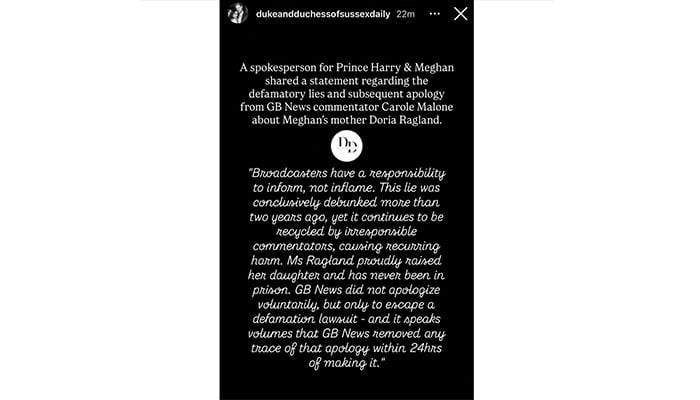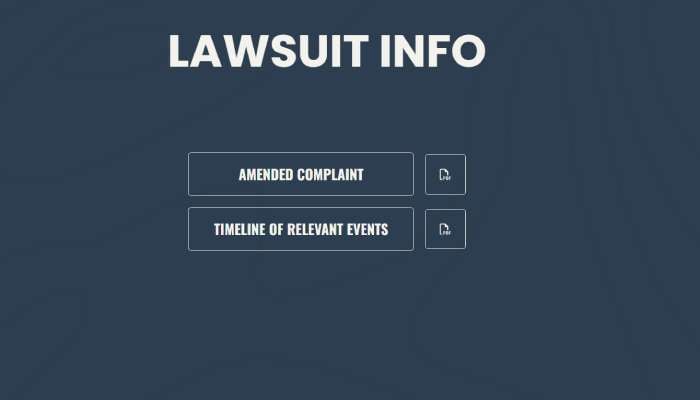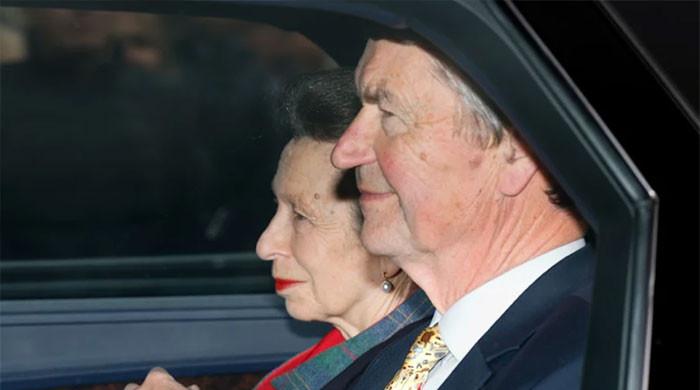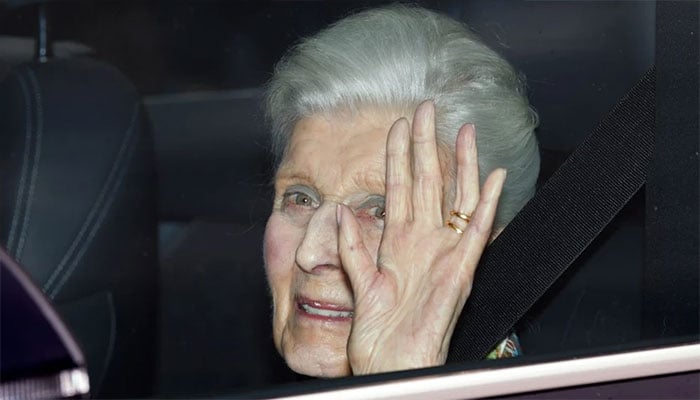Entertainment
Almost 4,400 people abused by priests in Italy, alleges victims’ group

Nearly 4,400 people have been abused by Catholic priests in Italy in cases reported since 2020, a victims’ group alleged on Friday, renewing pressure on bishops to confront a crisis that has long plagued the world’s largest Christian faith.
The unofficial tally by Rete l’Abuso, Italy’s largest church abuse victims’ group, is based on victims’ accounts, judicial sources and cases reported by the media, the founder of the association, Francesco Zanard,i said.
Rete l’Abuso did not say how far back the alleged abuse cases occurred.
The Italian Bishops Conference (CEI), which was criticised by the Vatican’s child protection commission last week, had no comment on the findings, a spokesperson said.
Most allegations concern abuse by priests
The global Catholic Church has been shaken for decades by scandals involving paedophile priests and the cover-up of their crimes, but local church leaders in Italy have been less forthcoming in confronting the issue.
New Pope Leo, who met survivors of sexual abuse by clergy for the first time this week, has told the Church’s newest bishops not to hide misconduct allegations. His predecessor, the late Pope Francis, made addressing the issue a priority of his 12-year papacy, but with mixed results.
In an unusually critical report on the issue published on October 16, the Vatican’s child protection commission said only 81 of Italy’s 226 dioceses responded to a questionnaire about safeguarding practices it had drafted.
Rete l’Abuso said it had documented 1,250 suspected cases of abuse — some with multiple victims — including 1,106 allegedly committed by priests, with the rest attributed to nuns, religion teachers, lay volunteers, educators and scout members.
Its report contained cases related to 4,625 victims — or survivors, as the association calls them — including 4,395 abused by priests.
The report said 4,451 of the survivors were under 18, and an almost equally large number — 4,108 — were male, Rete l’Abuso said, adding that five nuns, 156 vulnerable adults and 11 people with disabilities were also among the victims.
According to the association, out of the 1,106 suspected predator priests, only 76 were subjected to church trials, with 17 temporarily suspended, seven moved to other parishes and 18 were defrocked or resigned from the priesthood. Five died by suicide, it added.
Entertainment
Prince Harry and Meghan hit back ‘inform not inflame’ over false Doria claim

Prince Harry and Meghan Markle have issued a forceful response after GB News was compelled to apologise for broadcasting false claims about Meghan’s mother, Doria Ragland.
The couple’s spokesperson says that this should never have resurfaced in the first place.
In a strongly worded statement shared on Friday, the Duke and Duchess of Sussex accused the broadcaster and its commentators of recycling a long-debunked lie, despite it having been “conclusively disproven more than two years ago.”
The claim, which falsely alleged that Ms Ragland had served time in prison, was described as not only untrue but actively harmful.
“Broadcasters have a responsibility to inform, not inflame,” the spokesperson said, stressing that Ragland has never been incarcerated and “proudly raised her daughter.”
The statement also made clear that GB News’ apology was not voluntary, but issued only to avoid legal consequences adding pointedly that the apology itself was quietly removed within 24 hours.

The intervention marks another chapter in the Sussexes’ ongoing battle with what they see as unchecked misinformation in parts of the British media.
While Meghan has previously spoken about the personal toll media scrutiny has taken on her family, this response signals a hardening stance when it comes to false claims involving private individuals particularly those outside royal life.
The episode has reignited debate around editorial standards, accountability, and the role of broadcast media in amplifying claims that have already been discredited.
Entertainment
From Diddy to Kardashians the biggest celebrity legal battles of 2025

Another year, another round of celebrity legal battles that remind us that even in 2025, the toxicity and criminal activity in Hollywood runs deep.
The cracks have been showing for years if not decades; between bigshot filmmaker Harvey Weinstein being convicted of rape and the beloved Princess of Pop, Britney Spears, revealing she’d practically been made to perform on gunpoint, the industry’s reckoning has been a long time coming. And although we’re still a long ways away, significant strides were made this year.
If you thought 2024 was chaotic, 2025 proved Hollywood’s legal storm is just getting started.
1. The reckoning of Sean ‘Diddy’ Combs
A year after his September 2024 arrest, Sean “Diddy” Combs faced the biggest reckoning of his career: a federal criminal trial that ran for nearly two months in the summer of 2025. After weighing five felony counts, the court sentenced Combs to 50 months in prison (4 years) with a $500,000 fine. It could’ve been much worse; he avoided a potential life sentence after being acquitted of the two major charges — sex trafficking and racketeering conspiracy.
The trial, which was not televised, began on May 12 under Judge Arun Subramanian in a Manhattan courtroom with a 12-person New York jury made up of eight men and four women. From day one, Combs’ defence leaned on a technical distinction central to their case. “Domestic violence is not sex trafficking,” they argued in opening statements, framing the prosecution’s narrative as an overreach rather than a federal crime (BBC).
The prosecution’s star witness was Combs’ ex-girlfriend Cassandra “Cassie” Ventura, who signed onto Combs’ Bad Boy Records in 2005 at age 19. Her 2023 sexual assault lawsuit — settled within 24 hours for $20 million — had triggered a wave of more than 70 civil suits against Combs and helped set the stage for the federal investigation. On the stand for four days, Cassie described being assaulted by Combs while trying to flee one of his alleged “freak-offs” in 2016, a moment which was caught on camera and leaked by CNN months before Combs’ arrest.

Combs’ team called no defence witnesses, nor did Combs take the stand. They opted instead for aggressive cross-examinations. Legal analyst Mitchell Epner noted that the strategy signalled confidence: that the prosecution’s witnesses “made our case,” and that the defence didn’t need to present additional testimony to raise reasonable doubt (USA Today).
Several high-profile figures were pulled into the proceedings. Kid Cudi testified that his car was deliberately blown up during the period he briefly dated Cassie. Other celebrities, like Usher and Justin Bieber, surfaced in online conspiracy theories. Kanye West even appeared at the courthouse one day in support of Combs. Suge Knight, founder of Death Row Records, publicly defended Combs from prison despite their infamous rivalry. Meanwhile, 50 Cent’s top-streamed Netflix documentary on Combs intensified public scrutiny with footage and allegations that stretched back to the 1990s.
After six weeks, the jury delivered its verdict: not guilty on sex trafficking and racketeering conspiracy, but guilty on two counts of transportation with intent of prostitution. Combs was formally sentenced on October 3. With credit for time served and a one-month added sentence over alleged prison rule violations, the disgraced hip hop mogul is eligible for release on June 4, 2028.
2. Justin Baldoni loses defamation case against Blake Lively
Blake Lively closed out 2024 by officially filing a sexual harassment lawsuit against her It Ends With Us costar and director Justin Baldoni on December 31. That same day, Baldoni filed a $250 million defamation lawsuit against The New York Times over their report that Baldoni orchestrated a “smear campaign” against Lively. And thus, the stage was set for Lively vs. Baldoni 2025.
On January 16, Baldoni filed a second lawsuit alongside Wayfarer Studios — a $400 million countersuit targeting Lively and her husband Ryan Reynolds, accusing them of hijacking the film and orchestrating a smear campaign against him. In his complaint, Baldoni alleged Reynolds mocked him using the character “Nicepool” in Deadpool & Wolverine, which was released around the same time as IEWU. Baldoni’s team then launched an aggressive strategy, releasing videos, audio clips, emails, text messages, details of his lawsuits, and a timeline of events on a website called “Lawsuit Info.” The website is still available: thelawsuitinfo.com.

The move did not sit well with Federal Judge Lewis J. Liman, who warned both sides about litigating in the press and tainting a jury (ABC News).
By March, Reynolds filed a motion to dismiss Baldoni’s defamation suit, arguing it lacked legal grounding and stemmed solely from Baldoni’s “hurt feelings” over Nicepool. Lively filed her own motion to dismiss two days later, calling Baldoni’s claims an abuse of process and invoking California protections for harassment accusers.
On June 9, Judge Liman dismissed Baldoni’s $400 million countersuit and his $250 million suit against The New York Times. The newspaper later sought damages from Baldoni and Wayfarer for legal fees.
Taylor Swift became an unexpected figure in the dispute after Baldoni’s team issued subpoenas seeking her communications with Lively, accusing Lively of trying to pressure Swift to publicly pledge allegiance to her. Swift’s representatives brushed off the claim as a publicity stunt. The first subpoena was withdrawn, but Baldoni’s team reissued another later in the year. They also tried to depose Swift by serving her deposition papers outside her fiancé Travis Kelce’s house, but failed (People magazine).

Lively sat for her deposition on July 31. Shortly after, Baldoni’s team filed an unrevised draft in court, prompting Lively to move to strike it from court records. In August, Judge Liman granted Lively’s request to unseal evidence she says shows Baldoni’s team orchestrated a smear campaign. Lively is also seeking millions in attorney fees under California’s Protecting Survivors from Weaponized Defamation Lawsuit Act of 2023 — a point Baldoni’s team disputes.
Baldoni’s attorneys argue that the law doesn’t apply to this case as Lively “fabricated her allegations of sexual harassment,” which is what they’re going to try to prove in trial. But will that day actually come?
In early December, Judge Liman postponed the trial from March 9 to May 18 due to his criminal trials taking precedence over civil cases. He also advised both parties to consider settling outside of court.
3. Kendrick vs. Drake
Drake’s new year resolution for 2025 was to leave his feud with Kendrick behind. On January 3, Conductor Williams released a Drake freestyle track, Fighting Irish, where Drizzy reflects on the fallout from the battle and what he described as betrayal within the industry. “Just know the s**t is personal to us and wasn’t just business,” he rapped, framing the dispute as unresolved and deeply felt.
A week later, Drake filed a defamation lawsuit in New York City against his home label, Universal Music Group, accusing the company of promoting Kendrick’s diss track, Not Like Us, a song littered with “inflammatory and shocking allegations.”
UMG pushed back, moving to dismiss the lawsuit as Drake’s attempt to “save face” after losing the rap battle to Kendrick.
Meanwhile, Kendrick responded to the lawsuit by mocking Drake on the Super Bowl halftime show stage. “I want to perform their favourite song, but you know they love to sue,” he teased before performing it anyway. Drake subsequently amended his lawsuit to accuse Lamar of trying to “assassinate the character of another artist.”
The case reached its turning point in October 2025, when a federal judge dismissed Drake’s lawsuit. The court ruled that Drake had no grounds to sue UMG and noted that Kendrick’s diss was just that — a diss track and a “war of words.”
Drake’s legal team said they intended to appeal the decision. As of now, no appeal has been filed.
4. Jay-Z’s dual victory
Jay-Z spent much of 2025 navigating two legal battles, one involving Diddy and the other shocking paternity claims.
At the end of 2024, an anonymous woman, represented by attorney Tony Buzbee, accused Jay-Z and Sean “Diddy” Combs of raping her when she was 13 years old after the 2000 MTV Video Music Awards. As Diddy’s legal troubles mounted, many viewed the lawsuit as a potential turning point for Jay-Z as well.
That reckoning never came. In February 2025, the woman abruptly withdrew her lawsuit. One month later, Jay-Z filed a defamation suit against both the accuser and Buzbee, alleging she had “voluntarily admitted” the claims were false and made under pressure. His filing described the case as an “evil conspiracy” designed to extort money and damage his reputation. In July, a judge dismissed Jay-Z’s defamation lawsuit, effectively closing that chapter.
The second legal battle was one Jay-Z had been fighting for a decade against a man named Rymir Satterthwaite, who alleged the rapper was his biological father. In November 2025, the case was officially dismissed, bringing an end to the decade-long dispute. Jay-Z declined to seek attorney fees, closing out one of the longest-running legal sagas attached to his name.
5. The Kardashians vs. Ray J
Ray J reignited a decades-old feud with his ex, Kim Kardashian, and her mother, Kris Jenner, in 2025 by firing back after they sued him for defamation. In October, Kardashian and Jenner filed a lawsuit claiming Ray J made “blatantly false” statements accusing them of being on the verge of a federal racketeering investigation and likening them to Sean “Diddy” Combs’ legal troubles.
In November, Ray J responded with his own legal filing, accusing Kardashian and Jenner of breaching a confidential settlement agreement from April 2023. That deal, he says, included a $6 million payment and a mutual non-disparagement clause that barred any future public mention of their infamous 2003 sex tape. Ray J alleges that references to the tape on The Kardashians violated that agreement, entitling him to damages and undermining the defamation claim against him.
His cross-complaint also revives long-standing assertions that Kardashian and Jenner orchestrated the leak of the tape and manipulated public narratives for publicity. The Kardashians’ legal team has dismissed his claims as unfounded.
Entertainment
Princess Anne’s red lip steals the show as royals sparkle at Buckingham Palace

It wasn’t just mince pies and carols at Buckingham Palace this week, Princess Anne added her own brand of festive flair to the royal pre‑Christmas lunch alongside husband Sir Timothy Laurence.
The Princess Royal elevated the seasonal spirit with a classic red lip, proving she’s just as stylish as she is steadfast in royal duty.
Anne’s appearance came as other senior royals gathered for King Charles’ annual holiday get together, a tradition continued from his mother’s reign that draws extended family to the palace ahead of Sandringham celebrations.
Also spotted arriving was Lady Helen Taylor, wrapped in a tan coat and magenta plaid scarf.
This year’s festivities carry an emotional note for Lady Helen, marking her first Christmas since the passing of her mother, the Duchess of Kent, in September.
Sophie pairing a chic checked brown coat with a striking Christmas‑tree green jumper because nothing says Yuletide quite like a bit of royal colour.
Meanwhile, Princess Alexandra greeted well wishers with a wave from her car, looking every bit the gracious cousin of the late Queen as she arrived for the gathering.

With Princesses Beatrice and Eugenie also in attendance and their father, Andrew, notably absent amid ongoing controversies, the lunch underscored a family navigating both tradition and turbulence this holiday season.
-

 Politics1 week ago
Politics1 week agoThailand launches air strikes against Cambodian military: army
-

 Politics6 days ago
Politics6 days agoTrump launches gold card programme for expedited visas with a $1m price tag
-

 Politics1 week ago
Politics1 week agoZelenskiy says Ukraine’s peace talks with US constructive but not easy
-

 Fashion1 week ago
Fashion1 week agoGermany’s LuxExperience appoints Francis Belin as new CEO of Mytheresa
-

 Tech7 days ago
Tech7 days agoJennifer Lewis ScD ’91: “Can we make tissues that are made from you, for you?”
-

 Business6 days ago
Business6 days agoRivian turns to AI, autonomy to woo investors as EV sales stall
-

 Entertainment1 week ago
Entertainment1 week agoToo big to fail? IndiGo crisis exposes risks in Indian aviation
-

 Business3 days ago
Business3 days agoHitting The ‘High Notes’ In Ties: Nepal Set To Lift Ban On Indian Bills Above ₹100






